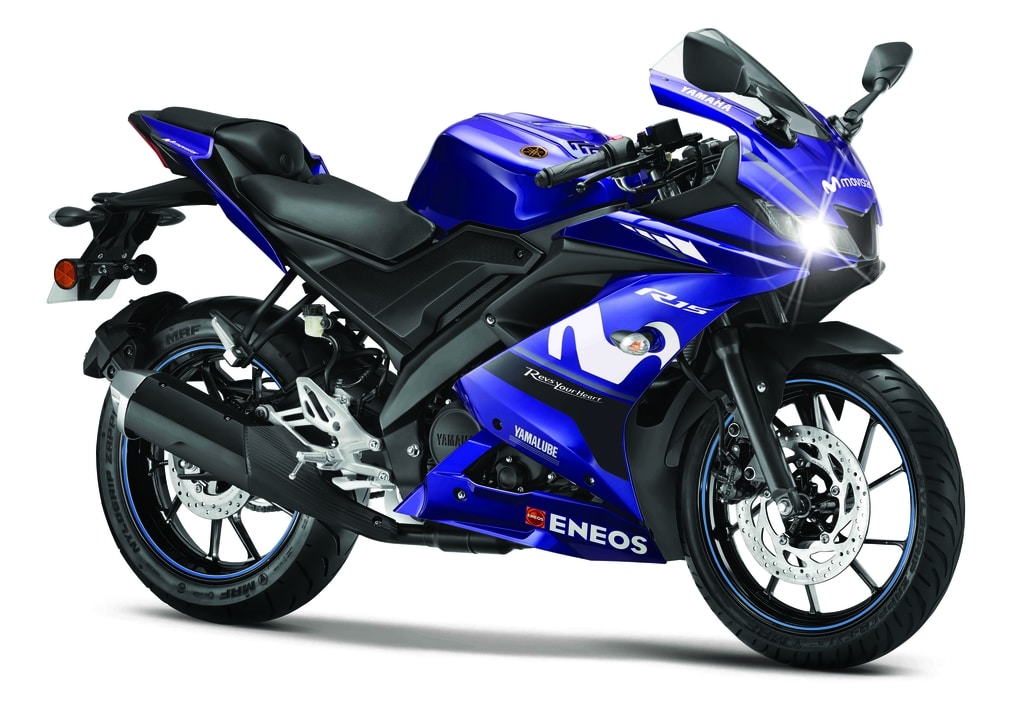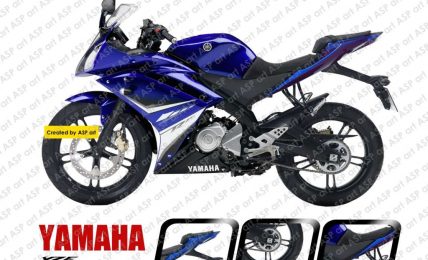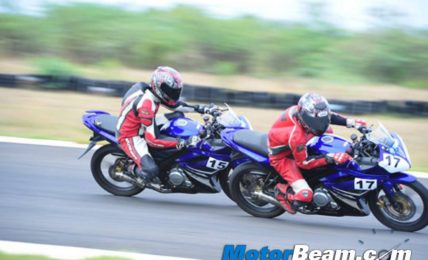The Pulsar has better power and torque figures than the R15
Performance – On paper, the Bajaj Pulsar RS 200 is the winner and it’s the same case on the road as well. The Yamaha R15, however, being almost 5 BHP less, keeps up with the RS 200 if we put them in a drag race. Both the engines are rev-friendly and the power kicks in very late. However, the 155cc Yamaha motor has a better and a punchy low-end when compared to Bajaj’s 200cc motor. This gives the R15 a great initial advantage and hence the Yamaha is quite city friendly too. The Pulsar’s engine comes alive only after 7000 RPM and then gaining speed is just a matter of rider’s quick shifts.
Yamaha has a better engine which is more suited for the city too
Throaty exhaust note from both the motorcycles comes in at the top-end, Bajaj is louder than the Yamaha
Both the motorcycles come with a 6-speed gearbox, the Yamaha gets a slipper clutch making it light and more rider friendly. However, on the Pulsar, the clutch feels slightly heavy. The gear shifter feels a little hard and few incorrect shifts are more prominent on the Bajaj. NVH levels on the Yamaha R15 are far superior to the Pulsar RS 200. There’s no harshness as such and the Yamaha motor has the least vibrations compared to the Bajaj, where it creeps in very early.
Rider comfort on the Bajaj Pulsar RS 200 is much better
Riding Dynamics – The ergonomics and the riding posture of both the Yamaha R15 and the Pulsar RS 200 is very different. To find a comfortable spot, the RS 200 is easy as you ride sitting upright. It gets tricky with the R15 as the riding posture is committed. Once you are used to the committed riding posture, the R15 feels very nimble and it can change direction like no one else. The Deltabox frame does come into play in city, highway and track riding. The Pulsar gets a perimeter frame which is just as similar but due to the different riding position, the rider doesn’t feel as confident on the RS 200.
R15 is more suited for committed riding and mostly track duties
Pulsar RS 200 stays comfortable and fast, Yamaha R15 stays sharp and flickable
For long distance riding, the R15 isn’t the best bet while the Pulsar makes a perfect solution. In the braking department, the Pulsar might have an upper hand with ABS as an option but it’s a single-channel unit. But both the test bikes here are without ABS and the Yamaha R15’s sharp brakes come in very handy. The braking feedback on the Yamaha R15 is much better than the Bajaj Pulsar RS 200. Tyres on the RS 200 are MRFs both at the front and the rear, however, the R15 gets Metzeler as an option at the rear. Our test bike had Metzeler rubber and the grip was just fabulous.
Picking one from the duo is only a matter of priorities
Verdict – Both the Yamaha R15 V3.0 and the Pulsar RS 200 have been positioned towards the youth in India. Both have good hardware underneath, both bikes look good in person and with little differences, both are very appealing. The Yamaha R15 V3 is a fresher motorcycle here with some extra hardware like a slipper clutch and a fully digital instrument cluster. The Bajaj Pulsar RS 200 isn’t as fresh but has performance and comfort right in the bag. The Yamaha R15 V3 is a motorcycle for an individual who has smaller commutes and prefers to go for some track riding. However, if commuting with decent performance is a priority then the person is better off with the Pulsar RS 200.
Even with the differences, both these motorcycles are fun to ride
Testers’ Note:
Further Reading –
Yamaha R15 Review
Yamaha R15 Video Review
Yamaha R15 V3 – Pros & Cons
Bajaj Pulsar RS 200 Review
2017 Bajaj Pulsar RS 200 Video Review
Bajaj Pulsar RS 200 Long Term Review




